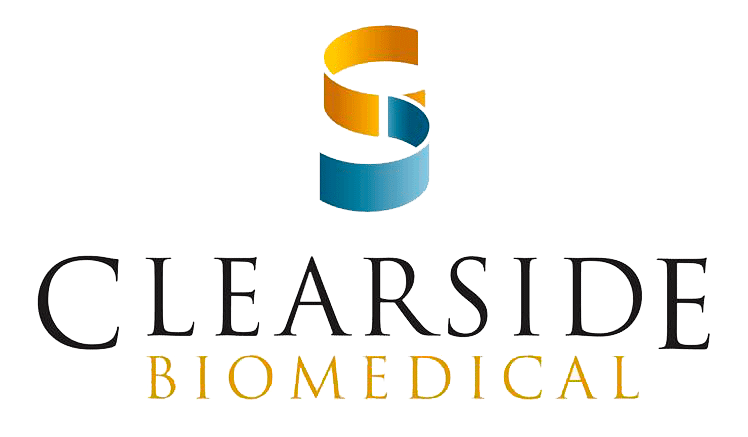
Clearside Biomedical, Inc. Announces 50th Patient Enrolled Using Suprachoroidal Drug Administration
Print 24 September 2015
Major Milestone for Innovative Ophthalmic Drug Administration Platform
September 24, 2015 07:30 AM Eastern Daylight Time
 ALPHARETTA, Ga.--(BUSINESS WIRE) -- Clearside Biomedical, Inc., a clinical-stage biopharmaceutical company developing innovative first-in-class drug therapies to treat blinding diseases of the retina and choroid, today announced the enrollment of the 50th patient using Clearside’s proprietary ophthalmic drug administration platform for delivering drugs to the suprachoroidal space (SCS).
ALPHARETTA, Ga.--(BUSINESS WIRE) -- Clearside Biomedical, Inc., a clinical-stage biopharmaceutical company developing innovative first-in-class drug therapies to treat blinding diseases of the retina and choroid, today announced the enrollment of the 50th patient using Clearside’s proprietary ophthalmic drug administration platform for delivering drugs to the suprachoroidal space (SCS).
Clearside’s SCS™ microinjector, with microneedles of varying lengths less than 1.2 millimeters, is designed to place drug precisely in the eye to the site of diseased tissue that threatens sight. Clearside believes SCS drug administration may provide a number of potential advantages, including greater bioavailability of treatments at the diseased tissues of the choroid and retina, thus potentially reducing the amount of drug needed to treat the diseased tissue and extending time between re-treatments. In addition, Clearside believes that compartmentalizing drug away from other areas of the eye may improve safety, including the reduction of side effects such as cataracts and increases in intraocular pressure (IOP) associated with some drugs.
“Today, the most common procedure for delivering drugs to treat back-of-the eye diseases like uveitis, retinal vein occlusion (RVO), age-related macular degeneration (AMD) and diabetic macular edema (DME) is intravitreal (IVT) delivery, where drugs are injected into the center of the back of the eye and disperse throughout the eye,” said Shree K. Kurup, MD, director of research and an associate professor of ophthalmology at Wake Forest University in Winston-Salem, NC. “Administration through the SCS may provide a route to reach the retina and choroid directly and precisely, which are the sites ophthalmologists are trying to reach consistently.”
Since 2013, Clearside has trained more than 60 physicians to administer drugs to the SCS. During that time, the company has completed a Phase 1/2 clinical trial evaluating the safety and efficacy of administering triamcinolone acetonide through the SCS for the treatment of non-infectious uveitis and a Phase 1 clinical trial evaluating the safety and efficacy of administering bevacizumab through the SCS for the treatment of wet AMD. The company is currently conducting two Phase 2 clinical trials with its proprietary formulation of triamcinolone acetonide (CLS-TA) for the treatment of macular edema associated with non-infectious uveitis and along with aflibercept for the treatment of macular edema associated with RVO. In June 2015, Clearside announced a favorable End-of-Phase 2 review with the U.S. Food and Drug Administration (FDA) on its CLS-TA administered via injection into the SCS for the treatment of macular edema associated with non-infectious uveitis. Agreement was reached with the FDA for the overall development plan with a single pivotal Phase 3 clinical trial, and the company is finalizing plans to enroll the first patient by December 2015.
The company is also evaluating using its SCS drug administration approach to treat wet AMD. Wet AMD is a disease hallmarked by new blood vessel growth in the choroid and is the leading cause of permanent impairment of reading and fine or close-up vision among people aged 65 years and older. “When treating wet AMD, delivering drug therapy directly to the choroid has the potential to provide efficacy with less drug,” said Seenu Hariprasad, M.D., Professor and Director of Clinical Research and Chief, Vitreoretinal Service at the University of Chicago Department of Ophthalmology and Visual Science. “Additionally, with high bioavailability at the site of the choroidal neovascular membrane, there may be an additional benefit by extending the interval between injections thereby decreasing treatment burden.”
Clearside Biomedical holds intellectual property protecting the delivery of drugs of any type through the SCS to reach the delicate tissues of the choroid and retina. In April 2015, Clearside and Spark Therapeutics, Inc. (NASDAQ: ONCE) entered into an agreement under which the companies are exploring the feasibility of using Clearside’s SCS microinjector to deliver viral vectors to the choroid and retina through the SCS.
“The delivery of drug to the SCS is accomplished using Clearside’s innovative SCS™ microinjector,” stated David M. Brown, MD, a prominent Houston, TX-based retinal specialist and thought leader on the research and treatments of AMD, DME and RVO. “The ease and potential consistency of SCS delivery of drugs for many back-of-the-eye diseases could potentially benefit many patients who currently require monthly intraocular drug injections.”
About the Suprachoroidal Space
The suprachoroidal space is no wider than 30 µm and is located between the choroid and the sclera. The SCS extends from the anterior portion of the eye near the ciliary body to the posterior end of the eye near the optic nerve. Normally the SCS is not evident due to the close proximity of the choroid to the sclera from the intraocular pressure of the eye. Since there is no substantial attachment of the choroid to the sclera, the tissues separate to form the SCS when fluid accumulation or other conditions occur. The SCS provides a potential route of access from the anterior region of the eye to treat the posterior region.
About Clearside Biomedical, Inc.
Clearside Biomedical, Inc., headquartered in Alpharetta, GA, is a clinical-stage biopharmaceutical company developing innovative first-in-class drug therapies to treat chronic, blinding diseases of the eye. Clearside’s product candidates focus on diseases affecting the retina and the choroid, especially diseases associated with macular edema. Visit www.clearsidebio.com for more information.
All Portfolio
MEDIA CENTER
-
The RMI group has completed sertain projects
The RMI Group has exited from the capital of portfolio companies:
Marinus Pharmaceuticals, Inc.,
Syndax Pharmaceuticals, Inc.,
Atea Pharmaceuticals, Inc.

